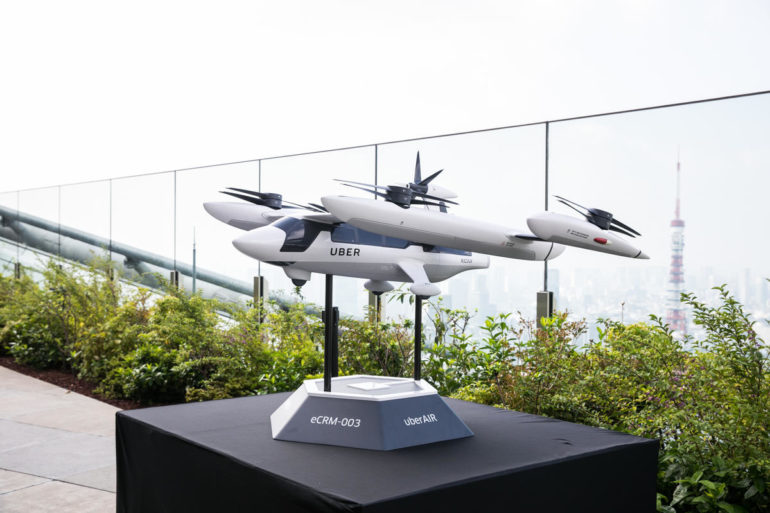As reported by Axios early Thursday, Uber is in advanced talks to sell Uber Elevate to Joby Aviation. Joby Aviation is a US aerospace startup founded in 2009.
Uber Elevate, formerly known as Uber Air, was touted by the company as an “urban aviation ride-sharing product”. Uber was pushing the service as a response to ease traffic congestion on the ground. In reality, the idea was a bold, expensive, and dystopian dream.
“In the long term, the vision is for safe, quiet electric vehicles transporting tens of thousands of people across cities for the same price as an UberX trip over the same distance,” Uber said in a statement announcing the initiative was coming to Australia.
The company in August 2018 announced five possible markets to launch its pipedream: Australia, Brazil, France, India, and Japan. It also confirmed that from 2023, customers will be able to get a flight on-demand in Dallas and Los Angeles.
Although Uber entered the Australian market prior to regulation and the green light from state and territory governments, forcing the lawmakers to retrospectively fix the mess, it was saying pre-pandemic it was “working with” the appropriate parties.
Regulation, specifically in Australia, was proving to be difficult, however.
In Australia, the Civil Aviation Safety Authority (CASA) regulates aviation safety. The government body issues licenses to pilots, registers aircraft, and oversees safety.
In order for Uber to get an aircraft up in the air, it would need to pass through CASA’s vigorous approvals process. This includes pilot approval, approval to carry passengers, and the aircraft itself — which didn’t even exist.
One issue from the Australian government perspective was that Uber was proposing an aircraft and purpose that currently does not fall under any pre-existing category.
Airservices Australia, the government-owned entity responsible for providing safe, secure, efficient, and environmentally responsible services to the aviation industry currently would not have jurisdiction over Uber Air, as its remit is for aircraft above 1,000 feet.
ZDNet understands the Department of Transport was working on policy, but when trying to determine who exactly would have responsibility over what, no clear answer was found.
In Australia, Uber partnered with Macquarie, Telstra, and Westfield-operator Scentre Group, and said it would work with existing partners including Melbourne Airport to develop the infrastructure and telecommunications needed to create the aviation network.
With nothing tangible, and more than a handful of regulatory, legal, economical, and practical roadblocks, pre-pandemic it was unclear if Melbournites could expect the Jetsons-like future of unmanned planes shuttling around those that could afford it. Post-pandemic, it’s looking even more unlikely.
In July, Uber said it had met with Australian-based partners and that although Melbourne remained Uber Air’s first planned international expansion market beyond the United States, there would not be any public demonstrations or test flights hosted in the Victorian capital this year.
“The Uber Air team remains focused on piloting the core technology in the United States first, because it is where most of our vehicle partners are already developing their aircraft and where many plan to receive certification,” it said.
“All of the Uber vehicle partners are expected to progress initial vehicle certification in their home jurisdictions. Accordingly we anticipate public demonstrations will happen in North America first, but will not speculate when that might be as the ripple impact of COVID-19 has not yet been fully realised.
“Uber Air is continuing to progress a safe, reliable, clean, quiet, and affordable air mobility service and will remain working with local partners to bring this vision to life.”
According to the Axios report, a deal could be announced later this month as Uber pushes forward with its plan to turn a profit.
Uber is currently undergoing a phase where it’s trying to tighten its belt and get rid of money-losing and peripheral aspects of its business.
Uber is yet to return a comment to ZDNet or its sister site CNET on the matter.
RELATED COVERAGE
Uber’s future may be more about Uber Eats, Uber Freight than ride sharing
The company’s ride sharing business is showing some improvement, but the wild card will be whether customer behavior changes in the long run. In the meantime, Uber Eats and Uber Freight may be the way forward.
Uber: We under-invested in technology
The ride-sharing service was focused on adding people quickly to its platform that its business suffered.
Uber drivers demand to see algorithms, data that determines their working lives
The court case claims increased data transparency is necessary to prevent discriminative practices.



